Only good movies
Get the Indie Focus newsletter, Mark Olsen's weekly guide to the world of cinema.
You may occasionally receive promotional content from the Los Angeles Times.
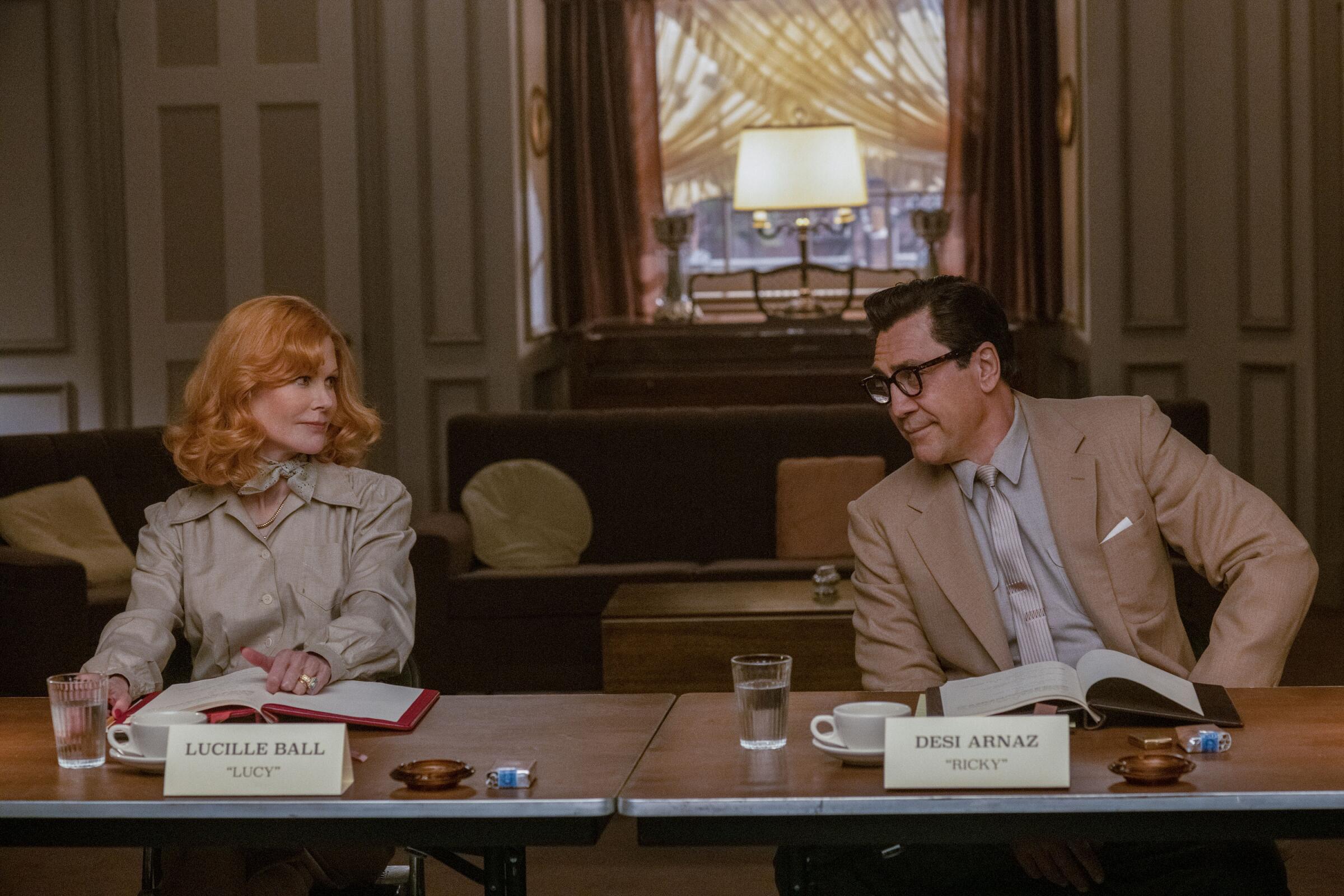
SPOILER ALERT: This explainer freely discusses the plot of “Being the Ricardos” and is meant to be read after you’ve seen the movie.
At the height of “I Love Lucy,” TV’s insanely popular ‘50s sitcom starring real-life spouses Lucille Ball and Desi Arnaz, the Red Scare nearly brought down Hollywood’s most famous redhead. Or did it?
Two years into the sitcom’s run, at the height of Ball‘s reign as America’s sweetheart, the actress was questioned by the House Un-American Activities Committee in its attempt to hunt out Americans suspected to have ties to the Communist Party during the Cold War era.
Times writers Mary McNamara and Meredith Blake take a deep dive into Aaron Sorkin’s dramatization of Lucy and Desi’s iconic showbiz relationship.
The revelation of Ball’s link to the party threatened to bring down the beloved funnywoman, as it had the careers of other luminaries — and it now fuels much of the narrative of Aaron Sorkin’s “Being the Ricardos.” Now available to stream on Amazon Prime, the film takes place during a dramatized week of production on “I Love Lucy” in 1952 as Ball’s suspected ties to communism were under investigation by HUAC. It sets off Sorkin’s narrative, which condenses the timeline with other critical moments the couple faced — Ball’s pregnancy with son Desi Arnaz Jr. and mounting speculation about Arnaz’s infidelity — to capture a complex portrait of a beloved marriage under duress.
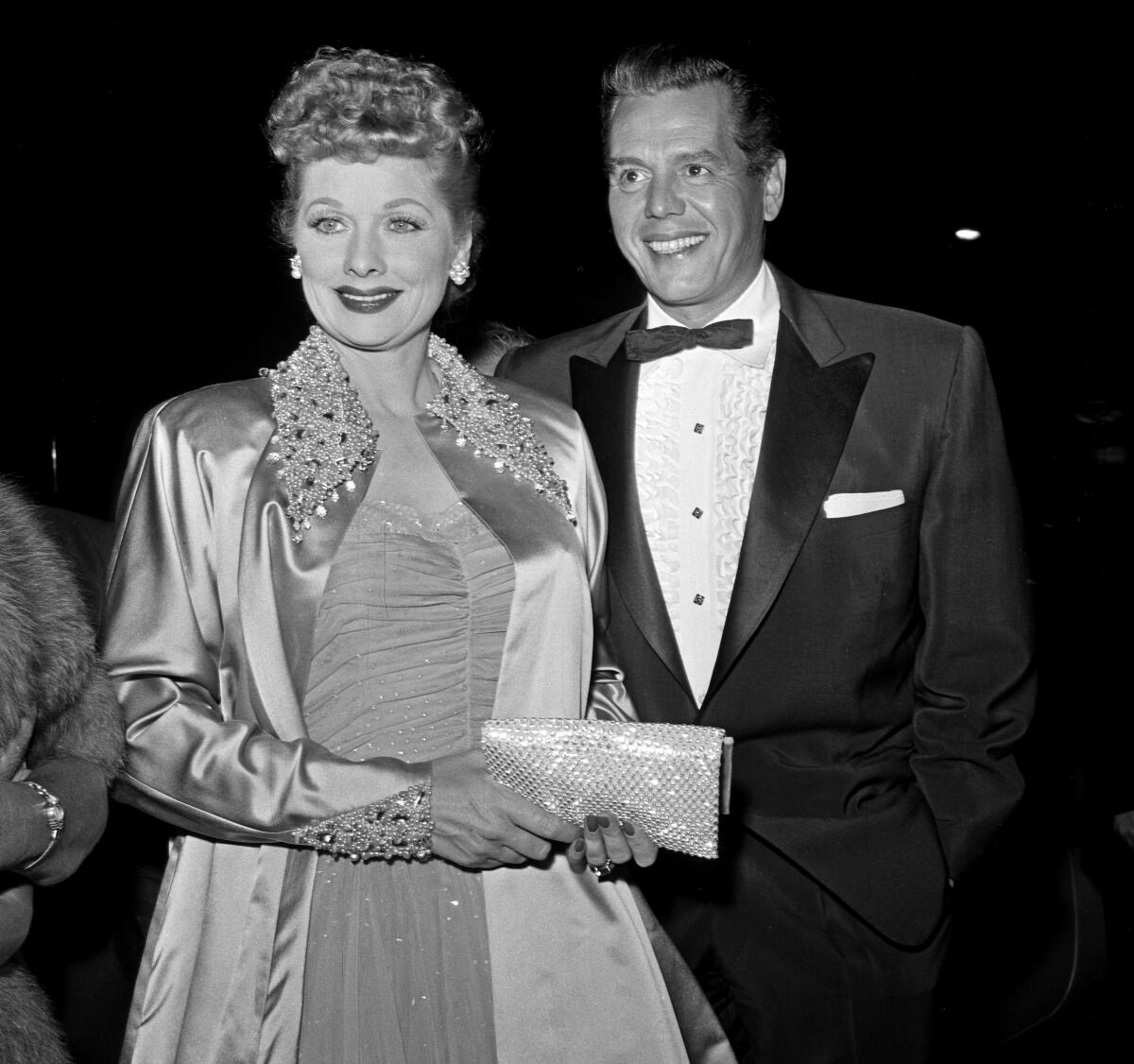
If you’ve watched the film, and you’ve read this far, you’re likely wondering how accurately it captures these events beyond the liberties taken to condense the timeline. So make like Fred Mertz, pull the glasses off the top of your head and dive in.
Nicole Kidman and Javier Bardem play Lucille Ball and Desi Arnaz in Aaron Sorkin’s latest hyper-articulate behind-the-scenes drama.
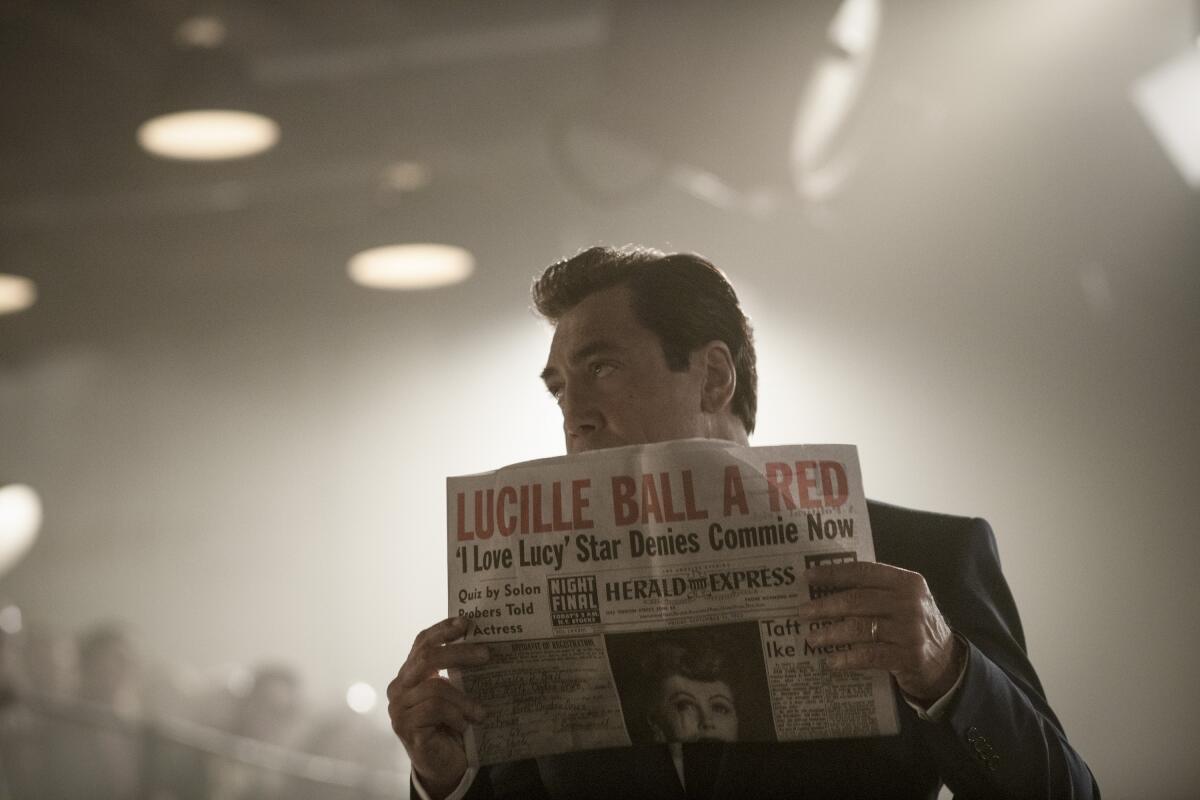
The incident that drives the film’s plot is the investigation into Ball’s ties to communism — an accusation that could kill someone’s career. She was called in to testify in front of HUAC on Sept. 4, 1953, in a closed-door session, at the height of Sen. Joseph McCarthy’s campaign against Communists in the U.S. Ball admitted to registering as a Communist in 1936, explaining the decision as one meant to appease her aging grandfather, who had been the father figure in her life. It had been his wish that she align herself with the party’s position, but Ball testified that she had not been an active member of the party.
“I am not a Communist now. I never have been. I never wanted to be,” Ball said in her testimony, according to the book “Desilu: The Story of Lucille Ball and Desi Arnaz.” “Nothing in the world could ever change my mind. At no time in my life have I ever been in sympathy with anything that even faintly resembled it. ... It sounds a little weak and corny now, but at the time, it was very important because we knew we weren’t going to have Daddy [her grandfather] with us very long. ... In those days, it was not a terrible thing to do. It was almost as terrible to be a Republican in those days.” (Sorkin makes use of the final sentiment in Ball’s conversation with CBS executives.)
The committee cleared the actress of any wrongdoing, with the assurance that none of the secret testimony would be made public. But two days later, news of her supposed political affiliations began to spread, as the film relays in its opening moments. Walter Winchell, a prominent radio commentator and syndicated newspaper gossip columnist, suggested in a blind item mentioned during his program that “the most popular of all television stars” was questioned about her membership in the Communist Party.
Aaron Sorkin explores the personal and professional lives of the iconic “I Love Lucy” stars in Amazon’s “Being the Ricardos.”
Ball later described her mental state in that difficult period in her autobiography, “Love, Lucy.” “The smash success of our TV show and the physical strain of combining my last pregnancy with a full work schedule took its toll,” she wrote. “I developed a feeling I couldn’t shake. All our good fortune was suddenly going to vanish. ... I received a call that seemed to realize my anxious apprehension. The call was from A. Wheeler, an investigator for the House Un-American Activities Committee.”
The film illustrates the lengths Arnaz was willing to go to in order to protect his wife: As depicted in the film, he gathered Desilu officials, along with executives from MGM, CBS and Philip Morris, the show’s sponsor. When they learned Ball had been cleared, Ball recounted, they figured nothing more needed to be done. But in Hollywood, nothing stays secret for long. The news broke.
In a climactic moment in the film, as the show reaches tape night, Arnaz invites members of the press to sit in the audience and gets then-FBI Director J. Edgar Hoover on the phone, putting a mic to the phone receiver, so the audience can hear directly from his mouth that Ball has been cleared. “She’s 100% cleared,” Hoover says to a stunned audience.
In reality, there was no call from Hoover. But Ball’s name was cleared hours before an episode filming — Rep. Donald L. Jackson, chairman of the House Un-American Activities Committee, held a press conference in a Hollywood hotel room and publicly absolved Ball of any wrongdoing. As the film shows, Arnaz did address the studio audience before the filming that night, reading from a speech he typed.
“Lucy has never been a Communist — not now, and never will be,” Arnaz said, as recounted in Ball’s book, to applause.
“I was kicked out of Cuba,” he continued, “because of Communism. We despise everything about it. Lucy is as American as Bernie Baruch and Ike Eisenhower.”
He later introduced his wife for the cast’s bow before showtime: “Now, I want you to meet my favorite wife, my favorite redhead — in fact, that’s the only thing red about her, and even that’s not legitimate — Lucille Ball,” a line Arnaz also detailed in his memoir. Ball walked out with tears in her eyes.
Nevertheless, Hoover continued to have evidence collected on Ball, according to a 1989 Washington Post report.
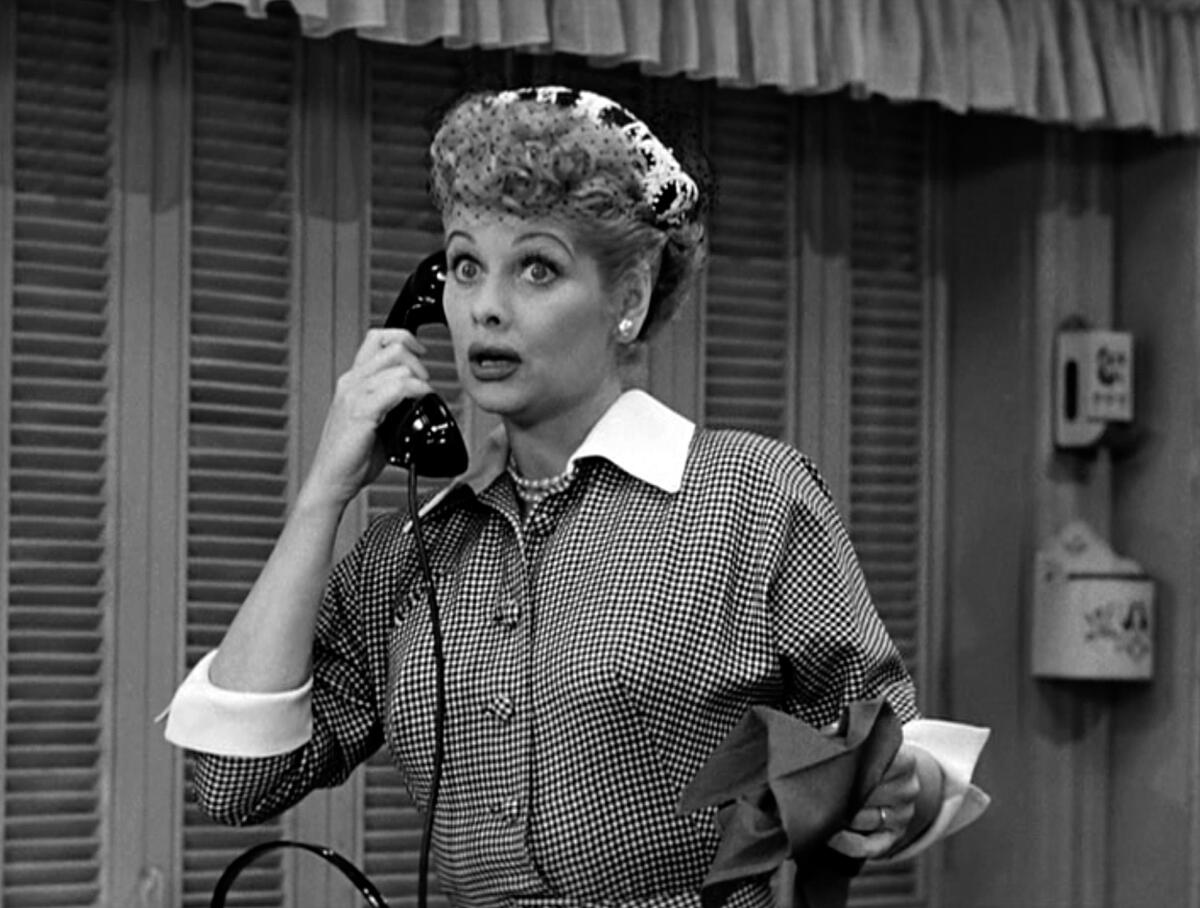
Another dilemma the couple faces in the film is Ball’s pregnancy with their second child, Desi Jr.. At a time when on-screen married couples were shown to sleep in separate beds, the P-word might have been too controversial to incorporate. But in a revolutionary feat of the time, “I Love Lucy” wrote Ball’s pregnancy into the show.
Sorkin’s telling of how that was set in motion gives credit to Arnaz, a detail that illustrates how savvy and persuasive he was as a Hollywood businessman. As co-owner of Desilu, the production company he founded with his wife, Arnaz has been heralded for the way he helped change the industry model of making TV — seeing the value of ownership rights and introducing the concept of a rerun.
In the film, Sorkin shows Arnaz and Ball breaking the pregnancy news to the show’s writing staff, who react with dismay rather than excitement. Even so, Arnaz matter-of-factly declares that Lucy Ricardo will have a baby on television — an idea met with intense reluctance by executive producer Jess Oppenheimer, who argues that neither the network nor the show’s sponsors will allow it.
In her autobiography, Ball’s version of events strays from Sorkin’s.
“In May 1952, Desi and I both walked into Jess Oppenheimer’s office, elated,” she wrote. “‘Well, amigo,’ Desi told Jess, ‘we’ve just heard from the doctor. Lucy’s having another baby in January. So we’ll have to cancel everything. That’s the end of the show ...’ Jess sat looking at us silently. Then he remarked casually: ‘I wouldn’t suggest this to any other actress in the world — but why don’t we continue the show and have a baby on TV?’”
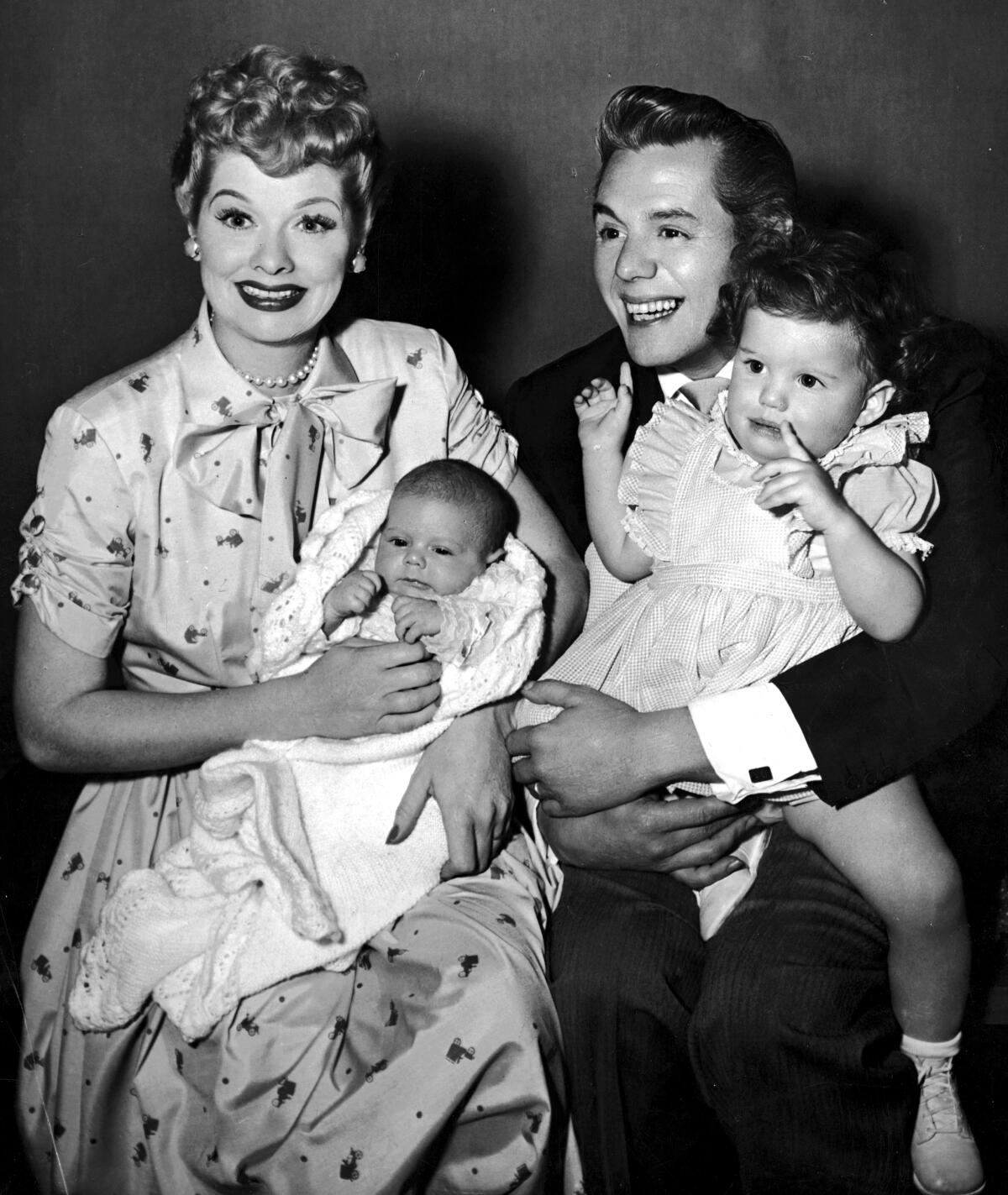
CBS and the Biow Agency (which represented sponsor Philip Morris) weren’t excited by the idea, but they went along with it under some conditions. The advertisers originally stipulated they would only agree to one or two episodes about the pregnancy. Arnaz wrote a letter to Philip Morris chairman Alfred E. Lyons, reminding the executive of the success the show had delivered to date under their creative decision-making and suggested that any changes to that now would warrant a shift in culpability for any subsequent failures because of it.
The creative team of “I Love Lucy” also had to contend with CBS not wanting the show to use the word “pregnant.” If Ball’s condition was going to be addressed, network censors preferred the use of euphemisms instead, including in the episode’s title, “Lucy Is Enceinte,” or “expectant.”
In the end, viewers ate up the storyline. Some 44 million tuned in to watch Lucy give birth to Little Ricky, which accounted for 72% of all TV homes at the time. (Ball gave birth to her son the same day Little Ricky was born.) President Dwight D. Eisenhower’s inauguration the previous day drew only 29 million viewers.
Years later, Arnaz learned that Lyons, the Philip Morris chairman, sent out a confidential memo saying, “To whom it may concern: Don’t f— around with the Cuban!”
The film’s first glimpse of Ball and Arnaz comes as the couple are midspat over gossip items in a Hollywood tabloid, Confidential, about Arnaz’s wandering eye — headlined “Desi’s Wild Night Out” and “Does Desi Really Love Lucy?” He initially denies the claims, but by the film’s end, he confirms Ball’s suspicions, admitting to sleeping with call girls: “They’re hookers,” he says. “It doesn’t mean anything.”
In truth, Confidential ran”Desi’s Wild Night Out” in the early years of their marriage, before the launch of “I Love Lucy.”
“While I was knocking myself out with moviemaking and bond tours, my marriage was crashing fast,” Ball wrote in her autobiography. “Desi’s nightlife had even blasé Hollywood talking. Confidential magazine published a story about a Palm Springs weekend of his, and this too hurt and humiliated me deeply. ... During the summer of 1944, Desi stopped coming home. One night I tossed sleeplessly until dawn wondering where our marriage had gone awry and what I had done wrong.”
Ball came to the conclusion that she would divorce him, which she chose to do in California because “a divorce there takes a year to become final, and therefore there were 365 days left for a reconciliation.”
Reconcile they did. But Arnaz’s behavior didn’t cease. Years later, Confidential ran “Does Desi Really Love Lucy?,” which detailed Arnaz’s alleged extramarital affairs, as its January 1955 cover story — when ”I Love Lucy” was in the middle of its fifth season.
“Behind the scenes, Arnaz is a Latin Lothario who loves Lucy most of the time but by no means all of the time,” wrote Brad Shortell in the piece, painting a striking portrait of Arnaz far removed from his charming husband alter ego. The article described a “business meeting” at the Beverly Hills Hotel where, as the reporter writes, a friend of Desi’s “got on the phone, calling one of Hollywood’s best door-to-door dame services.” According to the report, a friend “ordered two cuties, medium rare” — ‘50s innuendo at its sleaziest.
Charles Pomerantz, Ball’s longtime publicist, recounted his client’s reaction to the piece, which involved summoning humor, to People magazine decades later: “I gave an advance copy to Desi, and Lucy said, ‘I want to read this story.’ It was during a rehearsal day, and she went into her dressing room. Everybody was frozen on the set. She finally came out, tossed the magazine to Desi and said, ‘Oh, hell, I could tell them worse than that.’”
They stay married for five more years, officially divorcing in 1960 after 20 years of marriage. In November 1962, Ball bought Arnaz’s shares of Desilu at $3 million and took over the studio, becoming the first woman CEO of a major Hollywood production company.
Only good movies
Get the Indie Focus newsletter, Mark Olsen's weekly guide to the world of cinema.
You may occasionally receive promotional content from the Los Angeles Times.